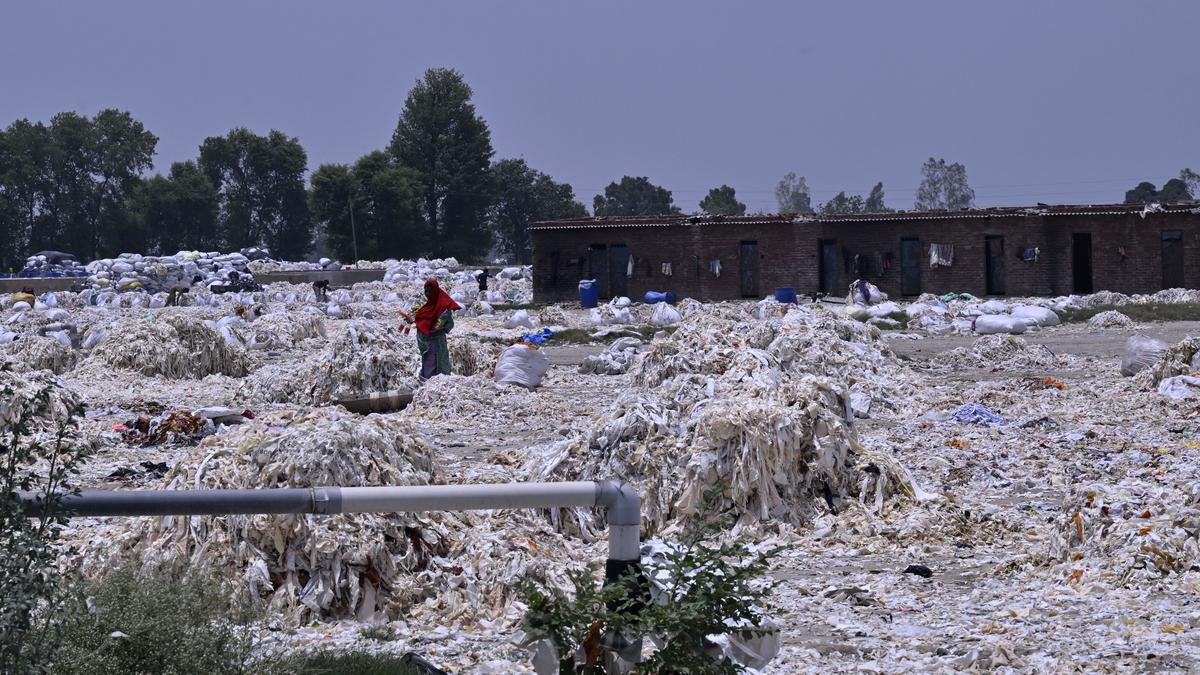Now Reading: Abandoned Fortunes: Unveiling India’s Forgotten Wealth
-
01
Abandoned Fortunes: Unveiling India’s Forgotten Wealth
Abandoned Fortunes: Unveiling India’s Forgotten Wealth

Fast Summary
- Environmental Concerns in Panipat: The Yamuna river near Khojkipur village, Haryana, runs dry during summer. Cattle that cool off in the polluted river water often fall sick due to chemicals from Drain No. 2 carrying industrial effluents.
- Textile Recycling Hub: Panipat processes around 30 lakh tonnes of imported textile waste annually and is a significant global hub for recycling cloth scraps into yarn used for products like blankets and carpets.
- Pollution Sources: Many illegal bleaching units operate without proper wastewater treatment, releasing chlorine-laden toxic water into the ground or local drains, which eventually pollutes the Yamuna. Biological Oxygen Demand (68 mg/l) and Chemical Oxygen Demand levels (284 mg/l) far exceed permissible limits.
- Health Impact on Local Population: Contaminated groundwater is reported to cause various skin ailments and even cancer among locals. Drinking water downstream towards Delhi is speculated as unsafe.
- Goverment Action & Awareness: PM Modi highlighted Panipat’s role in combating textile waste during his ‘Mann Ki baat’ broadcast. However, activists point out ongoing violations by unregulated bleaching units despite some enforcement actions like closures ordered by regulatory bodies.
- Global Waste “Burden”: Experts argue this model constitutes “waste colonization,” with developed countries exporting textile waste to India while passing environmental burdens onto vulnerable regions.
- Industry Challenges: High operational costs make legal compliance challenging for many units; owners claim adherence would eliminate thin profit margins.
Indian Opinion Analysis
Panipat serves as a dual narrative-an industrial powerhouse recycling global textile waste but also a site of severe ecological degradation and public health concerns. While its economic importance cannot be understated, with advanced mills processing large volumes of scrap daily, its lack of sustainable practices highlights systemic failures that demand urgent rectification.
Illegally operating bleaching units pose direct risks not only to local ecosystems but also downstream areas reliant on the Yamuna’s waters-an issue that extends well beyond regional boundaries. Measures such as incentivizing eco-amiable recycling technologies or mandating strict pollution controls could balance economic output with sustainability goals.
Moreover,public awareness campaigns emphasizing responsible consumption cycles must accompany stringent industry oversight frameworks so India can lead environmentally conscious production without inheriting unfair ecological costs from global supply chains.Read more























